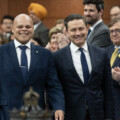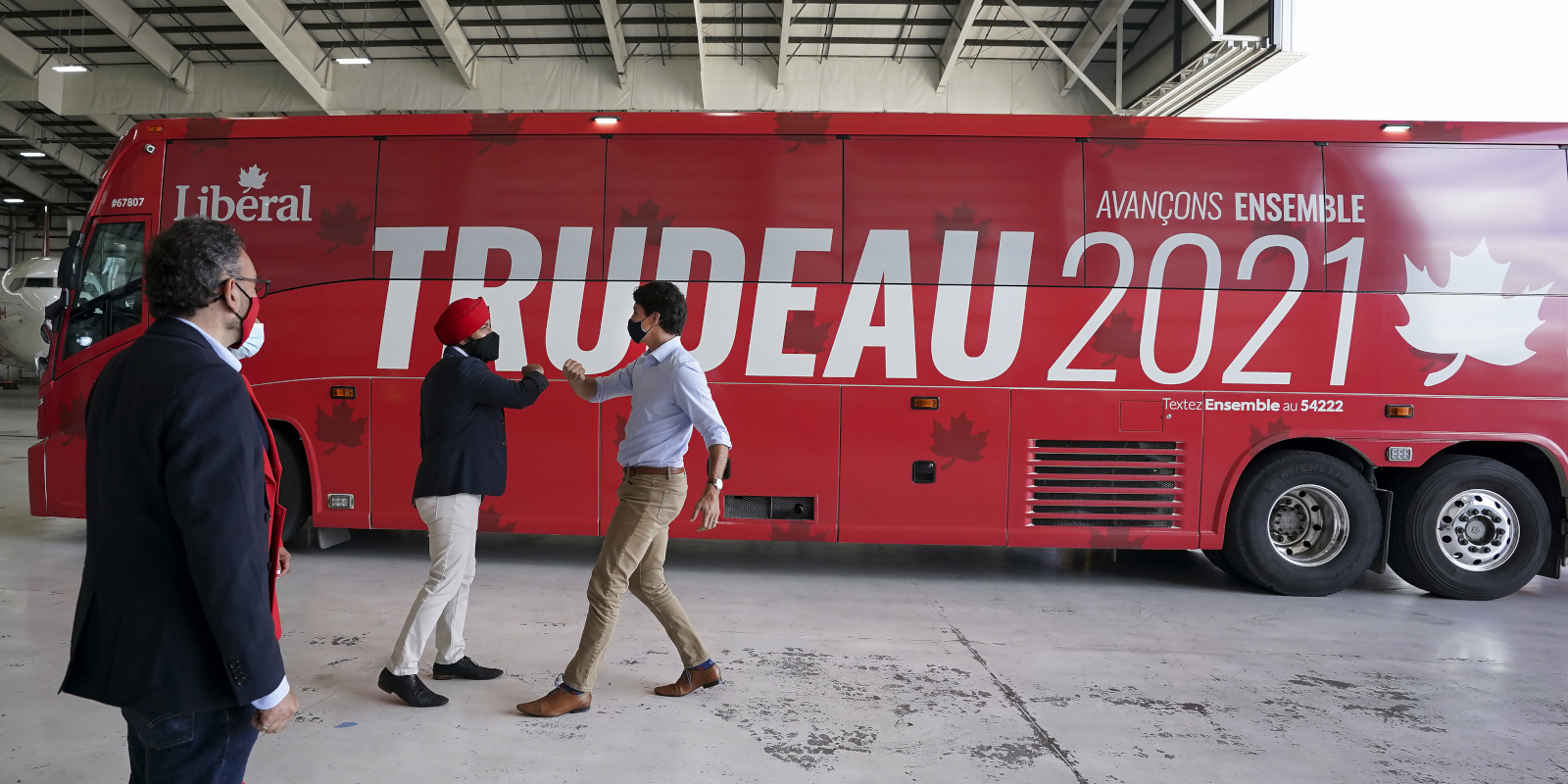Welcome to The Hub’s Federal Election 2021 Policy Pulse, where we’ll be tracking all the policy announcements from the major parties, with instant analysis from our crew of experts.
With the election scheduled for Sept. 20, we’ll be monitoring 36 days worth of policy ideas, so watch out each morning for the day’s live blog where we’ll be tracking every announcement as it happens.
4:30 p.m. — It’s American endorsement day on the campaign trail
By L. Graeme Smith, The Hub’s content editor
The 1988 Canadian federal election featured a Liberal attack ad where shadowy free trade negotiators are sitting before a map of North America and, villainously, begin erasing the border between Canada and the United States.
American intrusion into Canadian culture and politics is a big deal in this country, something nefarious to be condemned and guarded against at all costs.
That is, until it isn’t:
3:30 p.m. — Why the relative silence on Indigenous issues? Here’s a few theories
By Karen Restoule, contributor at The Hub
As we near the tail end of the federal election campaign, Canadians have taken note of how quiet candidates have been on their plans to move the country towards reconciliation with Indigenous communities.
While each major party has noted within their platforms how they intend to support Indigenous priorities, we have heard very little from the leaders themselves throughout the campaign trail — well, other than at the three debates where it was tabled to them for commentary.
Even Justin Trudeau, who stated in his early days as prime minister that “[n]o relationship is more important to Canada than the relationship with Indigenous Peoples”, has been quiet on the trail. In his most recent interview with Global News, he stopped host Neetu Garcha as she wrapped the segment to point out that they had yet to cover big things that British Columbians cares about, like the pandemic and climate change, to which she replied, “Mr. Trudeau, what people care about is, among many things, is reconciliation.”
The silence has felt misplaced, in contrast to the empathy, sadness, and anger expressed by Canadians over the course of the past few months in light of the growing number of human remains identified in the backyards of residential school sites across the country.
It’s possible that parties are recognizing that Indigenous peoples are not to be politicized, not a “political football” to be tossed around as part of a broader political agenda.
It’s also possible that these events have humanized Indigenous children, families, communities, shedding light on the serious issues created by the Indian Act and the impacts on generations of Indigenous peoples.
Also possible is that parties are recognizing that the issues faced by Indigenous communities can’t be addressed by solutions that align strictly within their political ideology, that the issues are uniquely complex and dynamic and require a relational approach.
Or, have parties been staying mum because they’re recognizing that funding alone won’t see through the much-needed shift towards equity? We’ve all seen that despite historic funding levels into Indigenous affairs by the federal government since 2015, the dial has barely moved on baseline standards of Canadian life, like clean drinking water, healthy housing, education, if at all.
While a segment of the English debate focused on Indigenous reconciliation, and some quick commentary was provided in the two French debates, it would have been appropriate and welcomed for us to hear from each party leader on the priorities outlined by Inuit leader Natan Obed and National Chief Roseanne Archibald, Indigenous business leaders and advocates, and other policy and thought leaders.
On August 31, 2021, Assembly of First Nations (AFN) National Chief Roseanne Archibald delivered a document outlining the priorities of First Nations and invited party leaders to take action in five areas: truth and reconciliation, climate change, economic growth, respecting First Nations’ jurisdiction, and strengthening First Nations.
On behalf of the Inuit people, Inuit Tapiriit Kanatami(ITK) leader Natan Obed tabled 15 priorities on August 24, 2021, for consideration as part of the 2021 federal election. The top three of those 15 priorities include: the completion of the Inuit Nunangat Policy initiated in 2019, Inuit-led suicide prevention measures, and food security among Inuit.
Indigenous business leaders and advocates have expressed through media their expectations in having Indigenous issues discussed among party leaders, economic and social alike.
And, some established thought leaders published options for political consideration. MLI policy expert Ken Coates calls out political inaction in his latest piece and lays out a framework for Canada on how to move forward in partnership with Indigenous peoples. Coates lays out directly – among many important points – the need for Canadians to learn to listen to Indigenous leaders and communities about the true history, contemporary challenges, and future directions, and most importantly, five considerations in the reinvention of Indigenous policy that prioritize empowerment.
Maybe next time, Canadians will get a full debate on Indigenous policy – just like leaders like National Chief Roseanne Archibald has stated in a recent interview: “… [w]here we could really get a sense of what these leaders are prepared to do, what commitments they can make.”
Who knows, the opportunity might come sooner than later.
2:30 p.m. — Should the world waive IP protection for COVID-19 vaccines?
By L. Graeme Smith, The Hub’s content editor
Efforts to vaccinate Canadians have been redoubled, with even Alberta now onboard with a vaccine mandate system to encourage the hesitant and to protect the health care systems from being overwhelmed.
Despite the uneasiness over the country’s current uptake numbers, Canada’s vaccine rate is one of the highest in the world at 146 per 100 people.
Given the global nature of the pandemic and the ever-evolving threat of variants that could emerge in any corner of the earth, getting as much of the rest of the world vaccinated as possible is in everyone’s best interest. Outside the developed world, however, the numbers are bleak. For instance, Canada had, by June 2021, secured enough vaccines for 434 percent of its population, whereas Jordan had enough vaccines for only six percent of its people.
In October 2020 India and South Africa led a host of low- and middle-income countries to submit a request to the World Trade Organization, modified as of May 2021, asking the international body to waive IP protection for products and technologies related to COVID-19 prevention, treatment, and containment. The hope is to essentially compel the companies who innovated the new vaccine technology to share knowledge and processes, allowing rival companies in local countries to produce vaccines for themselves.
America has offered tentative and limited support for the waiver so far, while the UK, Japan, and the European Union remain opposed, with the EU putting forth a counterproposal. Canada has, of yet, not supported or opposed the measure.
Should Canada support the waiver? The Macdonald-Laurier Institute recently hosted a webinar panel with a host of experts to discuss the issue, which you can watch here. Overall, they conclude, upending the current system would be a mistake. How such a waiver could even be enforced given the complicated nature of the new technologies and processes is also a significant barrier, they explain.
“The proposal is taking a wrecking-ball approach,” says Mark Agnew, senior vice president of policy and government relations at the Canadian Chamber of Commerce. “It is not necessarily a tactical or surgical strike that they’re looking at with this, so I think there’s a very legitimate question as to what sort of future signals this would send to the market and to the companies that have to do the innovation at the end of the day if it were to be passed in its current form, certainly.”
Cooperation is already happening between the innovators and other local governments and companies, and it is precisely the protections provided by intellectual property rights, and the ability to sign confidential contracts, that enables trust and collaboration to take place. Safeguarding this system is key to mutual benefit both now and in the future, says Kristina Acri, professor of economics and business at Colorado College.
“If we dismantle the architecture that protects these intellectual property rights, then we’ve introduced a tremendous amount of risk and uncertainty into the process.” This will, in the end, just lead to less cooperation and sharing than we are already seeing, she says. “Everything is upended when we waive patent rights.”
As to where each of the major parties stand, back in May, Prime Minister Justin Trudeau said that Canada was working on a “consensus-based solution”, was involved in discussions with “various different partners who have various different opinions”, and that his government is “engaged wholeheartedly in these discussions on various proposals.”
Conservative leader Erin O’Toole, in contrast, stated that “Conservatives support a temporary suspension to intellectual property rules in this pandemic to help get vaccines as quickly around the world as possible.”
The NDP platform highlights that the party supports measures “that would waive intellectual property rights for COVID vaccines and ensure technology transfer, so that low-income countries can start making vaccines locally and save lives.”
1:15 p.m. — How much are the major federal parties spending? A look into the numbers
By Amal Attar-Guzman, The Hub’s associate editor and Sean Speer, The Hub’s editor-at-large
Over the course of the election campaign, the parties have announced a dizzying number of policy commitments totalling hundreds of billions of dollars in new spending.
Tracking these pronouncements and their cumulative costs hasn’t been easy. The parties released their individual and overall fiscal costing late in the campaign and in several cases they didn’t avail themselves of the Parliamentary Budget Office (PBO)’s independent estimates.
At a high level, while the parties have committed to different mixes of tax and spending measures, the cumulative effect of their respective plans is quite similar. As we observed in an earlier post, higher deficits and more debt is a common characteristic of each party’s fiscal policy.
The NDP, for instance, proposes to add $214 billion to federal expenditures over the next five years which will be partly offset by $166 billion in new taxes and other revenue measures. The net fiscal impact of the NDP plan is therefore $48 billion.
The biggest area of incremental spending for the NDP is health care. In particular, the party proposes to spend as much as $11 billion per year by 2025-26 on a new national pharmacare model. It’s not clear if the expectation is that provinces and territories would be expected to match this spending or if Ottawa would assume the full, incremental cost of these health-care expansions.
The Liberals plan to increase spending and reduce taxes at a total cost of $78 billion over five years which is partly offset by $25 billion in higher taxes. The net impact of their policy promises amounts to $53 billion.
Their biggest single promise is their child care agreements with the provinces and territories which will ramp up to more than $8 billion per year over the five-year period though this funding is already reflected in the government’s fiscal framework. The Liberals’ largest incremental promise is a new mental health transfer payment to the provinces and territories which would reach $2 billion per year by 2025-26.
The Conservatives propose a mix of higher spending and lower taxes totalling $90 billion over five years, offset by $39 billion in spending roll backs — most significantly from abandoning the Liberals’ childcare plan — and some new revenue measures. The net impact on the debt is $51 billion.
The Conservatives’ costliest promise in the medium-term is to double the Canada Workers Benefit which is projected to cost $5.8 billion per year by 2025-26. The party’s commitment to raise the Canada Health Transfer’s growth rate to 6 percent annually will only cost $2.1 billion in 2025-26 but will presumably become its largest fiscal commitment over a longer timeframe.
The upshot: Notwithstanding different tax and spending priorities (which may or may not be good ideas), the cumulative effect of the parties’ respective policy platforms is that they would add between $48 billion and $53 billion to projected federal deficits over the next five years.
11:00 a.m. — All the major parties agree that large-scale borrowing is the new normal
By Sean Speer, The Hub’s editor-at-large
The federal election campaign has been marked by efforts on the part of the political parties to differentiate themselves on both big and small issues. This has led to various campaign claims that tend to reflect political rhetoric more than substantive disagreement.
The best example of such hyperbolic claims obscuring actual policy convergence is fiscal policy. Although the parties have put forward different tax and spending proposals, the cumulative effects of their respective policy promises differs far less than readers may realize. The overall fiscal balance and debt accumulation over the next five years is essentially the same according to the policy platforms released by the Conservative Party and the Liberal Party.
We have, in other words, seemingly reached a new political consensus at the federal level in favour of spending more than the federal government collects in revenues on an ongoing basis. Large-scale borrowing is the new normal for federal fiscal policy.
A note of caution about the fiscal projections in the party platforms: they should mostly be viewed as directional rather than specific. Platform promises are only one part of an incoming government’s policy agenda.
There will no doubt be other tax and spending decisions that contribute to the government’s fiscal policy. There are also of course other factors, including the rate of economic growth, that influence government revenues and expenditures. The parties’ platforms — and the accompanying fiscal costing — should therefore serve as a rough guide of their priorities and overall direction.
Take the Liberal Party’s 2015 platform for instance. It promised to run $10 billion annual deficits for three years before balancing the budget in 2019. But readers will know that’s not what ultimately happened. Cumulative deficits over the three-year period totaled more than $50 billion and a balanced budget was put off indefinitely.
The best that might be said therefore is that the party platforms provide a signal about how the different parties’ generally think about fiscal policy issues. But understanding these signals is still useful for voters to assess the broad direction and relative credibility of the different parties on fiscal and budgetary matters.
Rebekah Young of Scotiabank’s economics team has recently produced analysis that draws on available sources, including the Parliamentary Budget Office (PBO)’s itemized costing, to produce an overall fiscal picture for each of the parties. For those interested in fiscal policy issues, you can find her full article here.
Two charts from her short brief are pasted below. They speak to the new red ink consensus among the political parties described above.

Chart 1 displays projected federal budgetary deficits based on the Liberals and Conservatives’ policy platforms. The grey bars are the annual deficits from the 2021 federal budget for the fiscal years from 2021/22 through to 2025/26. They show the federal deficit was projected to fall from $154.7 billion in 2021/22 to $30.7 billion by 2025/26. The dotted line reflects the revised — and slightly improved — “baseline” deficit track estimated by the PBO in August. The red line is the projected deficits under the Liberals’ plan and the blue line is the Conservative plan.
The Liberal and Conservative deficit projections follow essentially the same track over the five-year period. The Conservatives would record a slightly larger deficit in the current fiscal year while the Liberals would record higher deficits in 2024/25 and 2025/26. The cumulative difference over the five-year period is negligible.
Chart 2 tracks the federal debt as a share of the economy over the same timeframe. The change in debt-to-GDP under the two plans is basically indiscernible. The Liberals would add $2 billion more to the federal debt than the Conservatives.

One minor difference is that while the Conservative Party has committed to balancing the budget within a decade, the Liberals haven’t made a similar commitment though they’ve promised to maintain and eventually lower federal debt as a share of GDP. It’s worth noting though that this is the same fiscal anchor that the Trudeau government previously promised but now the federal debt is roughly 20-percentage points higher than it was prior to the pandemic (50 percent versus 30 percent of GDP) which may demonstrate the limits of debt-to-GDP as a serious fiscal constraint.
If one was to assess the different party’s credibility on controlling spending and meeting fiscal targets, the post-financial crisis record of the Harper government was much more credible than the Trudeau government which even prior to the pandemic was growing program spending at roughly 6 percent per year and regularly exceeding its deficit projections. Based on this recent history, it would be generally reasonable to assume that the Conservatives would probably have more upside in their fiscal policy projections than the Liberals.
It’s difficult to know, however, if an O’Toole government could be expected to maintain the previous Conservative government’s sustained fiscal discipline. The party’s platform commitment to reverse the Harper government’s changes to the Canada Health Transfer do not bode well.
The upshot: The major political parties have ceded fiscal issues to marginal parties like the People’s Party (which has promised to balance the budget within four years) and so no matter which party Canadians vote for the most likely fiscal policy outcome is more deficits and debt for the foreseeable future.
8:30 a.m. — The People’s Party is surging because it swapped one taboo for another
By Stuart Thomson, The Hub’s editor-in-chief
As a populist wave swept across the western world, Canada appeared to be a lonely holdout. In a House of Commons with 338 seats, not a single one was claimed by a party advocating lower immigration levels after the 2019 election.
It’s not that Canada is immune to the ideas that fuel populist parties. Somewhere between 30 and 40 percent of Canadians want immigration levels to be lower, with anonymous online polls tending to be on the high end of that range. In fact, an EKOS poll in 2015 found that 41 percent of Canadians think there are too many “visible minorities” immigrating to Canada.
These polling numbers are fairly sturdy over the years and perhaps the most surprising thing is that no politician has effectively exploited them. Some have tried, though.
In the 2019 election, Maxime Bernier’s People’s Party of Canada was almost entirely known for a stand against “mass immigration,” which seemed like a tortured Canadian version of U.S. President Donald Trump’s “build a wall” rhetoric. On election day, the PPC flopped, winning zero seats and earning only 1.6 percent of the national vote.
So, why did the PPC fail in 2019?
“Taboos which mark the boundaries of debate are very important in English Canada,” wrote the political scientist Eric Kaufmann, in his book Whiteshift. In almost all mainstream media, and among mainstream politicians, the PPC and its ideas were effectively shut out.
It could also be that while many Canadians would prefer lower immigration numbers, it’s not a particularly salient issue for them. The rigidly enforced elite taboo and the lack of enthusiasm from Canadians on immigration stymied Bernier’s party.
But Kaufmann argues that the taboos work great, until they don’t. Once some populist leader — usually a strong communicator with a wily political sense — breaks the taboo it sparks a wildfire, which seems to come out of nowhere and then burns uncontrollably. The one-third of the population that quietly harboured the taboo opinion is suddenly emboldened.
This is why Kaufmann has argued that endlessly expanding the definition of racism can be reckless, because it casts many more people into the racist outgroup and weakens the taboo. Once people feel like they are being unfairly maligned or that elites are precluding legitimate debate, the populist leader’s job becomes a lot easier.
With that in mind, we can turn our minds to the rise of the PPC in this year’s election campaign.
Among the various polling companies, the PPC is currently attracting the support of anywhere between four and eight percent of Canadians, with highs of 12 percent in previous weeks of the campaign.
This time, though, Bernier has hit on a different elite taboo: the restrictions brought in to battle the COVID-19 pandemic and the vaccines that about three-quarters of Canadians have taken to immunize themselves against the virus.
A Forum Research poll found that 62 percent of people who support the PPC have not been fully or partially vaccinated and 84 percent of their voters are opposed to vaccine mandates. In contrast, only five percent of Liberal voters are opposed to vaccine mandates, along with 42 percent of Conservative voters. The poll also found that 70 percent of PPC voters are very angry with the federal government.
With broad agreement from most Canadians and a virus that makes policy decisions literally a matter of life and death, the elite taboo on disagreeing with pandemic restrictions has been strong. Anger or skepticism about lockdowns, mask mandates or school closures has been relegated to the fringe.
In 2019, the PPC was pushing populist ideas that had some agreement but no enthusiasm. This year, the PPC is pushing ideas that have less support, but much more enthusiasm. The wildfire is burning, it seems to have come out of nowhere, but it is much smaller than other populist surges that are based on immigration and race.
This phenomenon could also be a sign that PPC voters, many of whom previously voted for the Conservatives, won’t be “coming home” to the party on election day. If the PPC’s voters are highly motivated by pandemic restrictions, they’ll be looking at a federal Conservative Party that broadly agrees with most of the pandemic measures and conservative premiers, like Ontario Doug Ford, who have brought in some of the harshest restrictions in North America.
“I have no doubt that, when the votes are counted, we’ll be able to identify some ridings where the rising PPC cost the Conservatives a win,” wrote polling analyst Eric Grenier, in The Writ, his newsletter that tracks public opinion polling in Canada.
This might be a moment when the PPC’s slogan — “The Other Options Suck” — is particularly resonant with its voters.
7:00 a.m. — Where the leaders are today
Liberal leader Justin Trudeau will be in Windsor, Ontario to make an announcement at 9 a.m.
Conservative leader Erin O’Toole will be in London, Ontario to make an announcement at 12:30 p.m.
NDP leader Jagmeet Singh will be in Sherbrooke, Quebec to make an announcement at 9:45 a.m.
Recommended for You
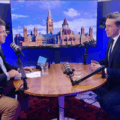
‘We have to cap population growth’: Ten quotes from Pierre Poilievre’s EXCLUSIVE Hub interview
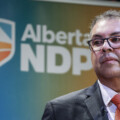
A win, a warning, and a wobble in Alberta’s byelection results
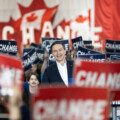
‘We now have to build on the coalition’: Pierre Poilievre on his federal election loss and the future of Canada and the Conservative Party
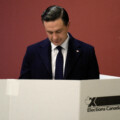
Paige Saunders and Sean Speer: The contrarian case for why Conservatives should embrace electoral reform
